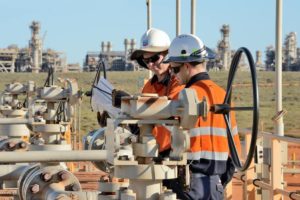Chinese researchers have successfully produced green hydrogen at an offshore wind farm using a direct seawater electrolysis process which avoids the need for separate desalination.
Located at the 459.4MW Xinghua Bay offshore wind farm on the southeast coast of China, the floating offshore hydrogen production platform was successfully tested for 10 days, according to Dongfang Electric Corporation and local English-language news channel CGTN.
During the 240 hours of operation, the platform, called Dongfu One, has endured force-eight wind speeds, one-metre-high waves, and a rainstorm.
Dongfu One was jointly developed by Dongfang Electric Corporation and a team led by Professor Heping Xie from the Chinese Academy of Engineering, and President of Sichuan University.
Dongfang claims that the floating hydrogen platform is the first of its kind to be combined with renewable energy. The platform integrates onsite hydrogen production using non-desalinated seawater electrolysis technology along with smart energy conversion management, safety monitoring and control, as well as loading and unloading systems.
The non-desalinated seawater electrolysis technology was previewed in a study published in the journal Nature late last year. The “membrane-based seawater electrolyser for hydrogen generation” seeks to avoid the need for “using a pre-desalination process” because “it requires additional energy input, making it economically less attractive.”
And while the cost of desalination in and of itself isn’t overly burdensome, the authors of the report additionally point to the fact that “the independent bulky desalination system makes seawater electrolysis systems less flexible in terms of size.”
Thus, direct seawater electrolysis does have its benefits over traditional hydrogen production reliant on desalination, and the technology developed by Heping Xie’s team seeks to address the technical challenges previously inherent in producing hydrogen directly from seawater.
The researchers had already conducted 3,200 hours of operation using a demonstration system but have now moved offshore to the larger Dongfu One floating platform.
According to Dongfang, “Its successful test validates the feasibility and stability of direct seawater electrolysis technology in a real ocean environment.”










